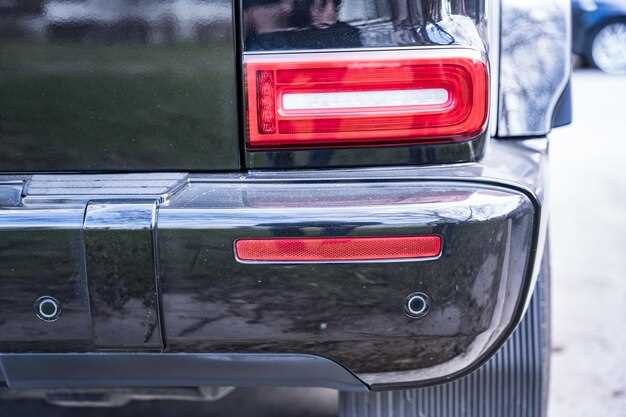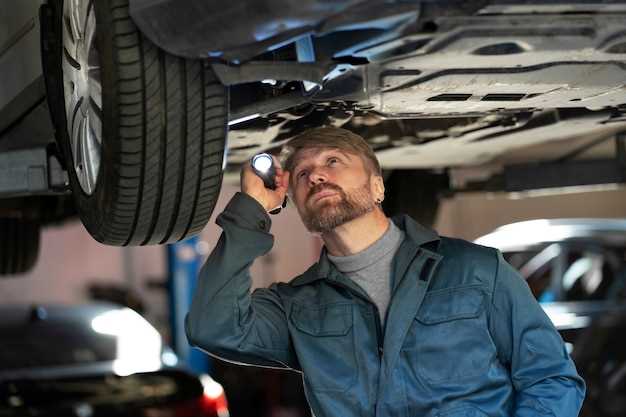
BMW vehicles are known for their precision engineering and superior performance; however, tail light issues can sometimes disrupt that excellence. A malfunctioning tail light not only poses a risk for safe driving but may also lead to legal penalties. Understanding how to quickly repair these tail light problems can save you time and maintain your BMW’s functionality.
Common issues with BMW tail lights often stem from bulb burnout, electrical circuit failures, or faulty wiring connections. Each type of issue can be addressed with a straightforward troubleshooting process. Recognizing the symptoms of these problems is crucial for effective repair.
By following some essential diagnostic steps and maintenance tips, BMW owners can resolve tail light malfunctions efficiently. This guide will equip you with the necessary knowledge and practical instructions to get your tail lights back in working condition, ensuring that your vehicle remains roadworthy and safe.
Identifying Common Tail Light Problems in BMW Models

BMW tail light issues can frequently arise due to various factors. Understanding these problems is essential for timely repair.
One common issue is a burned-out bulb. This often leads to one or both tail lights not functioning. Regular inspection can help identify if a bulb needs replacement.
Another issue could be a damaged socket. Corrosion or physical damage can disrupt the electrical connection, resulting in malfunctioning lights. Carefully checking the socket will aid in diagnosing this problem.
Fuse problems can also cause tail light failures. A blown fuse disrupts the power supply to the lights. Consult the owner’s manual to locate the correct fuse and check its condition.
Wiring issues, such as frayed or loose wires, can be a significant concern. Inspect the wiring harness for any signs of wear or damage, which may lead to intermittent lighting issues.
Lastly, moisture accumulation inside the tail light assembly can lead to electrical problems. If condensation is present, it may require seal replacement or complete tail light housing repair.
Identifying these common tail light problems in BMW models promptly can save time and ensure safe vehicle operation on the road.
Step-by-Step Guide to Replace BMW Tail Light Bulbs

Replacing the tail light bulbs on your BMW is a straightforward process that can enhance safety and visibility. Follow these steps to ensure a quick replacement.
Step 1: Gather Necessary Tools
Before you start, collect the required tools: a flathead screwdriver, a new tail light bulb (check the specific model for the right type), and gloves to protect your hands and the bulb.
Step 2: Open the Trunk
Open the trunk of your BMW to access the tail light assembly. Depending on the model, you may need to remove a panel or cover to reach the bulbs.
Step 3: Locate the Tail Light Assembly
Identify the tail light assembly on the side you need to replace. Look for screws or clips holding the assembly in place. Remove them carefully.
Step 4: Remove the Tail Light Assembly
Gently pull the tail light assembly away from the vehicle. Be cautious not to damage any wiring or connectors in the process.
Step 5: Disconnect the Old Bulb
Locate the old tail light bulb within the assembly. Twist or pull it out, depending on the design, and disconnect it from the socket.
Step 6: Install the New Bulb
Take the new tail light bulb and insert it into the socket. Ensure it fits snugly, and twist it to secure it in place. Avoid touching the glass with your fingers, as oil can shorten the bulb’s lifespan.
Step 7: Reassemble the Tail Light Assembly
Carefully position the tail light assembly back into the vehicle body. Secure it with screws or clips that you removed earlier.
Step 8: Test the New Tail Light
Before closing the trunk, turn on your BMW’s lights to test the new tail light. Ensure it illuminates correctly, indicating a successful replacement.
Step 9: Finalize the Installation
If the bulb works properly, finalize any panel or cover installation you may have removed. Close the trunk, and your BMW is ready to hit the road safely.
Diagnosing Electrical Issues Affecting BMW Tail Lights
When you encounter problems with your BMW tail lights, the first step is to diagnose any electrical issues that may be the root cause. A systematic approach is essential for effective repair. Start by checking the fuse associated with the tail light circuit. A blown fuse can interrupt power and lead to malfunctioning lights. Consult your BMW’s manual for the exact fuse location and specification.
Next, inspect the tail light bulb itself. Ensure that it is properly seated in its socket and check for any signs of damage or burn-out. If necessary, replace the bulb with a new one, ensuring compatibility with your vehicle model. Sometimes, the issue can be as simple as a faulty bulb, which can be quickly replaced.
If the bulb is intact and the fuse is functional, examine the wiring harness connected to the tail lights. Look for any signs of fraying, corrosion, or broken connections. Damaged wires can cause intermittent failures; repairing or replacing these wires may resolve the issue.
Utilize a multimeter to test if power is reaching the tail lights. Set the multimeter to measure DC voltage, and check the voltage at the bulb socket while someone activates the lights. A reading of 12 volts confirms that the circuit is functioning properly. If no voltage is detected, trace the wiring back towards the fuse box and ground to identify breaks or shorts in the circuit.
Check the ground connection as well; a poor ground can lead to insufficient power supply to the tail lights. Ensure the ground point is clean and securely attached. Enhancing the ground connection can often resolve lighting issues.
If all of the above components check out but the problem persists, the issue may lie within the vehicle’s body control module (BCM) or other electronic components. In such cases, utilizing specialized diagnostic tools may be necessary to identify deeper electrical faults. Accurate diagnosis is critical for effective repair and ensuring your BMW tail lights function properly.



